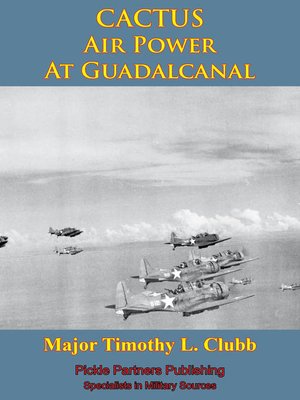
Sign up to save your library
With an OverDrive account, you can save your favorite libraries for at-a-glance information about availability. Find out more about OverDrive accounts.
Find this title in Libby, the library reading app by OverDrive.



Search for a digital library with this title
Title found at these libraries:
| Library Name | Distance |
|---|---|
| Loading... |
This study examines the role of the CACTUS Air Force during the battle for Guadalcanal. Hurriedly planned and executed, Guadalcanal was the first U.S. ground offensive in the Pacific. Starting as an unopposed amphibious assault, the operation turned into a six-month-long air, land, and sea battle to secure the island. Operating from an expeditionary airfield, the U.S. Marine Corps employed air power as its primary means of defending the island. The CACTUS Air Force conducted the campaign with limited air assets and was plagued by a variety of critical shortages, yet it managed to play a key role in the U.S. victory. This study focuses on the specific contributions of airpower during this campaign. It examines the role of air power in reconnaissance, deep, close, and rear area air operations. It also examines the factors that influenced how air assets were employed and the changes in U.S. concepts about air operations that were made to conduct the air campaign. CACTUS planes assisted in defeating several major Japanese attacks. However, the daily presence and routine operations of the CACTUS Air Force were its key contributions. CACTUS Air's most important contribution was its ability to deny the Japanese air superiority and disrupt their freedom of action in the lower Solomon Islands.







